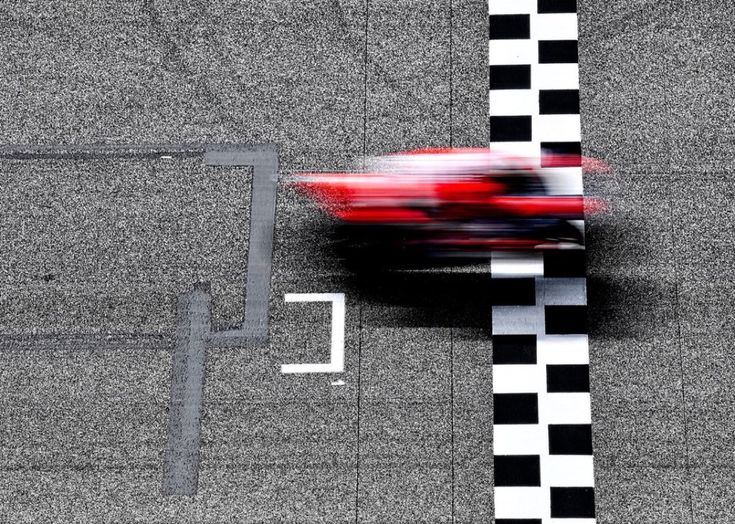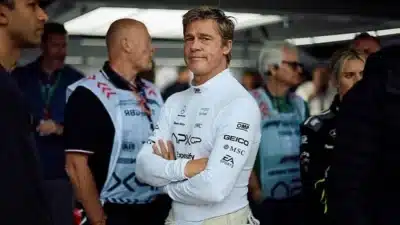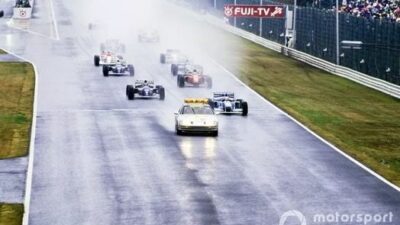MotoGP represents the pinnacle of motorcycle racing, where cutting-edge technology meets fearless riders pushing the absolute limits of speed. These purpose-built racing machines regularly achieve velocities that surpass most road-going superbikes and even rival Formula 1 cars on the longest straights.
The current MotoGP top speed record stands at an incredible 366.1 km/h (227.48 mph), achieved during official race conditions. This record showcases how far the sport has evolved since the early 2000s, with speeds increasing dramatically over the past two decades. The fastest circuits like Mugello have become synonymous with record-breaking performances, where riders experience forces and speeds that test both human capability and machine engineering.
1) Brad Binder – 366.1 km/h (227.48 mph) at 2023 Italian GP sprint race
South African rider Brad Binder made history at the 2023 Italian Grand Prix. He set a new MotoGP speed record of 366.1 km/h during the sprint race at Mugello circuit.
The KTM rider achieved this record on the track’s famous long straight before turn one. Binder’s speed of 227.48 mph broke Jorge Martin’s previous record of 363.6 km/h set at the same circuit in 2022.
What made this achievement even more remarkable was that Binder’s KTM RC16 wasn’t pushed to its maximum limit. He revealed after the session that he hadn’t hit the bike’s speed limiter when setting the record.
The Red Bull KTM Factory Racing rider started from 10th position on the grid for that sprint race. His record-breaking run happened during the race session at Mugello’s 1.1 kilometer straight section.
Binder’s 366.1 km/h record still stands as the fastest speed ever recorded in MotoGP competition.
2) Andrea Dovizioso – 356.4 km/h (221.5 mph) at 2018 Mugello
Andrea Dovizioso set the fastest speed in MotoGP history during the 2018 Italian Grand Prix at Mugello. He reached 356.4 km/h (221.5 mph) on his Ducati motorcycle.
The Italian rider achieved this record during Free Practice Two on June 1, 2018. The speed was clocked at 221.456 mph on the main straight at the Autodromo del Mugello circuit.
This record broke the previous top speed mark of 354.9 km/h (220.5 mph). That earlier record was set by Andrea Iannone in 2016.
Dovizioso was riding for the Ducati factory team when he set the record. The Mugello circuit is known for its long straight sections that allow bikes to reach maximum speeds.
The record still stands today as the highest top speed ever recorded in MotoGP competition. Dovizioso actually broke his own speed record twice during that weekend at Mugello.
3) Top speed record jointly held by multiple riders at Mugello
The current MotoGP top speed record stands at 366.1 km/h. This record is held jointly by two riders who achieved the same speed at different times.
Brad Binder first set this record in 2023 during a sprint race at Mugello. He made history by reaching 366.1 km/h on his KTM machine.
Pol Espargaro later matched this exact speed in 2024, also at Mugello. Both speeds were recorded during sprint races at the Italian circuit.
The fact that both riders achieved the identical speed shows how precisely modern MotoGP bikes perform. It also highlights Mugello’s unique characteristics for speed records.
Mugello’s long main straight and downhill braking zone create perfect conditions for these record attempts. Multiple riders often break the 360 km/h barrier during a single weekend at this circuit.
The joint record represents more than three times the speed limit on most highways. It demonstrates the incredible performance capabilities of modern MotoGP motorcycles and the skill of elite riders.
4) First MotoGP era top speed in 2002 – 324.5 km/h
The modern MotoGP era began in 2002 with four-stroke motorcycles replacing the old two-stroke 500cc bikes. This marked a major change in motorcycle racing technology.
Honda’s RC211V achieved the first MotoGP top speed record of 324.5 km/h during that debut season. The five-cylinder Honda dominated the 990cc era that followed.
This speed was much faster than the older two-stroke 500cc motorcycles. The new four-stroke engines produced more power and better performance on the track.
Tohru Ukawa was the rider who set this historic speed record on the Honda. The achievement showed how much faster the new MotoGP bikes were compared to their predecessors.
The 324.5 km/h record seems slow by today’s standards. Modern road sport bikes can now reach similar speeds that once only MotoGP bikes could achieve.
This first record started MotoGP’s steady evolution toward higher speeds that continues today. The 2002 season launched decades of speed improvements in motorcycle racing.
5) Mugello circuit known as the fastest track for MotoGP speeds
The Mugello Circuit in Tuscany, Italy holds the record as the fastest track in MotoGP history. Located about 30 kilometers northeast of Florence, this track consistently produces the highest speeds in motorcycle racing.
Brad Binder set a remarkable 366.1 km/h top speed at Mugello in 2023. Pol Espargaro matched this speed in 2024, showing how the track brings out peak performance.
The circuit’s long main straight allows motorcycles to reach speeds exceeding 350 km/h. This straight section demands perfect braking systems as riders must slow down dramatically for the next corner.
Jorge Martín previously held the speed record at 363.6 km/h in 2022. These extreme speeds make Mugello the undisputed home of top speed records in MotoGP.
The track combines technical challenges with straight-line speed. While riders navigate complex turns, they also experience the fastest speeds of the racing season at this Italian circuit.
6) MotoGP bikes exceed 360 km/h in official races
Modern MotoGP bikes regularly break the 360 km/h barrier during official race weekends. Multiple riders breach the 360 km/h barrier in a single weekend at certain circuits.
The highest-ever speed recorded during an official MotoGP season has been 366.1 kmph. This record shows how far the sport has pushed speed limits.
Modern bikes exceeding 360 km/h on a random Tuesday demonstrates the consistent performance of current MotoGP machines. These speeds happen regularly, not just during special attempts.
The Mugello Circuit in Italy sees the most 360+ km/h speeds. Its long main straight allows riders to reach maximum velocity during practice and qualifying sessions.
These extreme speeds occur during official MotoGP events, not private testing. Riders achieve these velocities while competing for championship points and podium positions.
The 360 km/h mark is no longer considered exceptional in MotoGP. Current technology and aerodynamics make these speeds achievable for multiple riders each race weekend.
7) Speed records significantly increased over the last two decades
MotoGP bikes have become much faster since the series began in 2002. The first year of MotoGP saw speeds reach 324.5 km/h, marking the starting point for modern speed records.
The speeds have grown steadily over time. By 2016, riders were hitting much higher speeds at certain tracks.
The current all-time record stands at 366.1 km/h (227.48 mph). This record was set during the 2023 Italian Grand Prix at Mugello by Brad Binder.
The jump from 324.5 km/h to over 366 km/h shows how much the sport has advanced. This represents an increase of more than 40 km/h in just over 20 years.
Mugello circuit has been the location for most speed records due to its long straight sections. The track’s layout allows bikes to reach their maximum potential.
Modern bike technology and better engines have made these speed increases possible. Teams continue pushing the limits each season.
8) Top 5 fastest MotoGP speeds all recorded at Mugello
The fastest speeds in MotoGP history all happened at the same track. Mugello circuit in Italy holds every top speed record in the sport.
Brad Binder set the current record at 366.1 km/h (227.5 mph) during the 2023 sprint race. Pol Espargaro matched this speed in 2024 practice sessions.
Before Binder’s record, Andrea Iannone held the top spot at 354.9 km/h (220.5 mph) in 2016. His Ducati reached this speed during the Italian Grand Prix weekend.
Dani Pedrosa previously held the record for years at 349.3 km/h in 2009. He rode a Honda when he set this mark.
The long straight at Mugello allows riders to reach these extreme speeds. The track’s design makes it perfect for breaking speed records year after year.
9) MotoGP top speeds surpass many superbikes and F1 cars
MotoGP bikes achieve impressive top speeds that often exceed other racing machines. The record top speed in MotoGP is 227.5 mph, with bikes regularly hitting over 223.7 mph during races.
These speeds put MotoGP bikes ahead of many superbikes on the track. MotoGP bikes are faster than superbikes, though the difference is not huge. The advanced technology and electronics in MotoGP machines give them the edge.
When compared to Formula 1 cars, MotoGP bikes often win in straight-line speed. At the Circuit of the Americas, F1 cars reach 205 mph while MotoGP bikes hit 221 mph on the back straight.
At Mugello, MotoGP bikes can reach 365 km/h on the main straight. This track allows riders to push their machines to maximum velocity.
The smaller engines in MotoGP bikes deliver surprising power. They prove that lightweight design and cutting-edge technology can beat larger, heavier racing machines in pure speed.
10) Increase in cornering speed as important as top speed for lap times
While MotoGP bikes reach incredible top speeds on straights, cornering performance plays an equally crucial role in determining lap times. Riders who master corner technique can gain significant advantages over competitors.
Cornering speed improvements can dramatically reduce lap times. A rider who enters and exits corners faster maintains higher average speeds throughout the entire lap.
The key lies in maximizing exit speed rather than just entry speed. Higher exit speeds provide benefits on the following straight sections, compounding the time savings.
Modern MotoGP riders use advanced techniques like trail braking to optimize their corner performance. This method allows them to carry more speed deeper into turns while maintaining control.
Data acquisition systems help teams analyze cornering performance with precision. These tools provide instant feedback on corner speeds and identify areas for improvement.
The fastest MotoGP riders excel at finding the perfect balance between straight-line speed and cornering ability. They understand that mastering corners requires precision and consistency rather than pure aggression.
Factors Influencing MotoGP Top Speeds
MotoGP bikes achieve speeds over 360 km/h through a precise combination of advanced aerodynamics, strategic track design, and expert rider technique. Each element plays a critical role in pushing these machines beyond 200 mph on certain straights.
Aerodynamics and Bike Design
Modern MotoGP bikes use complex aerodynamic packages that dramatically affect top speed performance. The front and rear wings create downforce at high speeds, improving stability but adding drag.
Key aerodynamic elements include:
- Front winglets that manage airflow
- Rear spoilers for stability
- Fairing design that reduces wind resistance
- Rider position integration with bike aerodynamics
Engine power delivery systems work with aerodynamics to maximize speed. The 1000cc four-stroke engines produce around 300 horsepower. This power must transfer efficiently through advanced traction control systems.
Weight distribution affects how aerodynamic features perform. Teams adjust bike setup to balance downforce and drag reduction. Too much downforce creates stability but limits top speed on long straights.
Track Characteristics
Circuit design determines where bikes can achieve their highest speeds. Mugello consistently produces the fastest speeds due to its long main straight and elevation changes.
Track features that enable high speeds:
- Straight length: Longer straights allow more acceleration time
- Elevation: Downhill sections add gravitational assistance
- Corner exit: Wide, fast corners before straights improve acceleration
- Surface quality: Smooth asphalt reduces rolling resistance
Weather conditions change how tracks perform for top speed runs. Cooler air provides more engine power and better aerodynamic efficiency. Wind direction can add or subtract several mph from peak speeds.
Slipstream effects become crucial on tracks with long straights. Riders position themselves behind competitors to reduce air resistance and gain speed advantage.
Rider Skill and Positioning
Rider technique directly impacts how fast bikes can travel on any given track. Body positioning changes the aerodynamic profile and affects stability at extreme speeds.
Expert riders tuck tightly against the bike to minimize wind resistance. They shift body weight to optimize traction and reduce drag. Small position changes can add or remove several mph from top speed.
Throttle control becomes critical above 200 mph. Riders must manage power delivery to prevent wheelies or loss of traction. They use advanced electronics but still need precise inputs.
Racing lines affect speed in multiple ways:
- Exit speed from corners before straights
- Optimal positioning for slipstream benefits
- Track surface selection for maximum grip
Mental preparation allows riders to maintain focus at dangerous speeds. They must process information quickly while managing bike control and race strategy simultaneously.
Historical Evolution of MotoGP Speed
MotoGP speeds have grown dramatically since the sport’s modern era began in 2002, starting at 324.5 km/h and eventually reaching 354.9 km/h at Mugello in 2016. This progression stems from continuous technological improvements and strategic regulation adjustments that have shaped the sport’s development.
Technological Advancements Over the Years
The transition from 500cc two-stroke engines to 990cc four-stroke MotoGP bikes in 2002 marked the beginning of the modern speed era. Early MotoGP machines achieved 324.5 km/h in their first year, establishing a foundation for future improvements.
Engine development became more sophisticated throughout the 2000s and 2010s. Manufacturers invested heavily in advanced materials, aerodynamics, and electronic systems that helped riders extract maximum performance from their machines.
Key technological developments included:
- Carbon fiber construction for lighter frames
- Advanced fuel injection systems
- Sophisticated traction control
- Seamless shift gearboxes
- Winglets and aerodynamic packages
Modern bikes now regularly exceed 350 km/h on long straights. Fourteen MotoGP riders broke the 350 km/h barrier at COTA in recent seasons, compared to just two riders achieving this speed in 2022.
Impact of Regulation Changes
The reduction from 990cc to 800cc engines in 2007 temporarily slowed speed growth as manufacturers adapted to smaller displacement limits. This change prioritized safety while maintaining competitive racing.
The return to 1000cc engines in 2012 reignited speed development. Top speed growth has been fairly steady since 2012, with manufacturers maximizing the larger engine capacity through improved efficiency.
Recent aerodynamic regulations have significantly influenced speed records. The introduction and subsequent limitation of winglets affected how bikes achieve maximum velocity on straights versus maintaining stability through corners.
Fuel capacity restrictions force teams to balance pure speed with fuel efficiency. Modern MotoGP bikes must complete races with limited fuel, requiring engineers to optimize power delivery rather than simply maximizing peak horsepower.
Frequently Asked Questions
MotoGP top speed records have reached 366.1 km/h at Mugello, with technology advances pushing speeds higher each year. These records involve specific riders, circuits, and technical factors that enable motorcycles to achieve extraordinary velocities.
What is the highest top speed ever recorded in MotoGP?
The highest-ever speed recorded during an official MotoGP season has been 366.1 km/h. This equals 227.48 mph and represents the absolute peak velocity achieved in premier class motorcycle racing.
Brad Binder made history during the 2023 Italian Grand Prix sprint race when he reached this record speed. The achievement took place at the Mugello circuit in Italy.
The record is jointly shared with other riders who have also reached this exact speed. Multiple riders have now breached the 360 km/h barrier at the same venue.
Who holds the record for the fastest top speed in MotoGP history?
Brad Binder currently holds the official top speed record at 366.1 km/h from the 2023 Italian Grand Prix. His KTM motorcycle achieved this speed during the sprint race format.
Andrea Dovizioso previously held the record at 356.4 km/h (221.5 mph) at Mugello in 2018. His Ducati motorcycle dominated speed records for several years before Binder’s achievement.
The current record is shared among multiple riders who have reached the same 366.1 km/h mark. Mugello’s long main straight allows multiple riders to breach the 360 km/h barrier in a single weekend.
How have MotoGP top speeds evolved over the years?
MotoGP top speeds have increased significantly since the four-stroke era began in 2002. The first recorded top speed in the MotoGP era was 324.5 km/h, showing dramatic improvement over two decades.
Each passing year sees MotoGP races taking place faster than the last. The progression from 324.5 km/h in 2002 to 366.1 km/h in 2023 demonstrates consistent technological advancement.
The 360 km/h barrier was once considered extremely difficult to breach. Now multiple riders regularly exceed this speed at suitable circuits like Mugello.
What factors contribute to a MotoGP bike achieving record top speeds?
Aerodynamic efficiency plays a crucial role in achieving maximum top speeds. Modern MotoGP bikes feature sophisticated winglets and bodywork designed to reduce drag at high velocities.
Engine power output directly influences top speed capabilities. Manufacturers continuously develop more powerful engines while maintaining reliability for race distances.
Track characteristics significantly impact speed records. Long straights with minimal elevation changes provide ideal conditions for maximum velocity attempts.
Weather conditions affect air density and bike performance. Cooler temperatures typically allow engines to produce more power and achieve higher speeds.
Which MotoGP track has witnessed the highest top speeds?
Mugello circuit in Italy serves as the undisputed home of top speed records. The track’s layout features an exceptionally long main straight that enables maximum velocity runs.
The circuit’s downhill braking zone allows riders to maintain high speeds longer than other tracks. This configuration creates optimal conditions for setting speed records.
Multiple speed records have been established at Mugello across different years. The track consistently produces the highest velocities seen in MotoGP competition.
How does the technology in MotoGP bikes influence top speed capabilities?
Advanced engine management systems optimize power delivery for maximum straight-line speed. Electronic controls allow precise fuel mapping and ignition timing adjustments.
Sophisticated transmission technology enables seamless gear changes at high speeds. Modern gearboxes reduce power interruption during shifts, maintaining acceleration momentum.
Carbon fiber construction reduces overall bike weight while maintaining structural integrity. Lighter motorcycles require less power to achieve high speeds and accelerate more efficiently.
Tire technology provides the grip necessary to transfer engine power to the track surface. Specialized compounds and construction allow safe operation at extreme velocities.

















